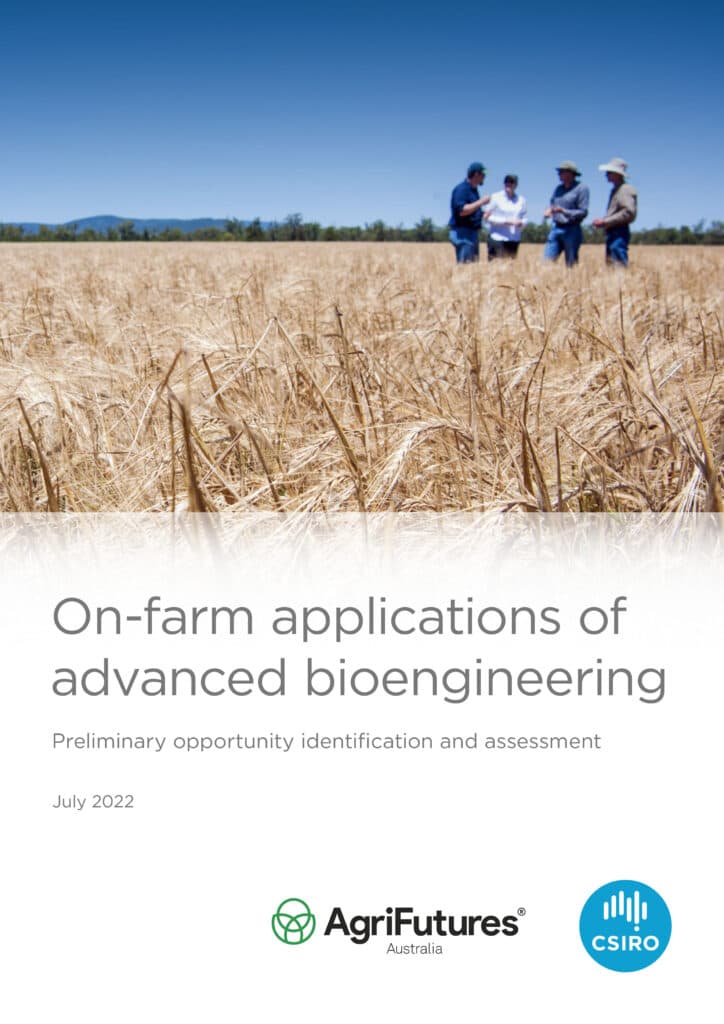In August 2021, CSIRO released the ‘A National Synthetic Biology Roadmap’, which found that under a high-growth, high-market-share scenario, synthetic biology could unlock up to $27 billion in annual revenue and 44,000 new jobs for Australia by 2040. It also identified food and agriculture as one of the largest emerging markets for synthetic biology applications.
Advanced bioengineering (also referred to as synthetic biology) is the design and production of novel, functional biological products through the application of engineering principles and genetic technologies. While high level information outlining potential use cases for bioengineering solutions in agriculture exists, there is little guidance on who, how and what is practically needed to achieve on-farm impact and deliver on those opportunities identified.
This research explores the most impactful bioengineering opportunities that exist to overcome challenges with pests and disease, waste and crop loss, as well as take advantage of opportunities with new crops, reduced/alternative inputs, new production systems and markets for Australian agriculture, in addition to potential areas for development and adoption.
Consideration was given to who is currently doing work in this space, both domestically and internationally, as well as commercial bioengineering and other technology applications currently available to the agriculture sector, or that could be repurposed for agricultural use.
The report provides guidance on the current ‘state of play’ of bioengineering in Australian agriculture and informs government, industry and AgriFutures Australia on research and commercialisation opportunities to engage in advanced bioengineering, including the breadth and depth of opportunities, the likely impact and the necessary steps to delivery.





